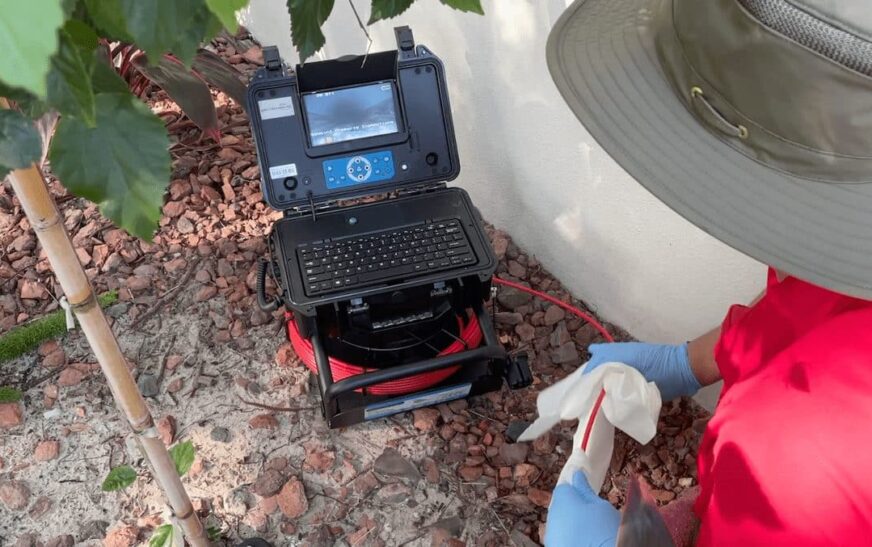When it comes to maintaining your home, there are many elements to consider—roofing, foundation, and even the plumbing system. Among these, the sewer system is often overlooked until a problem arises. To ensure that your sewer lines are functioning properly, it’s essential to understand the importance of sewer scope inspections. This blog will guide you through everything you need to know about sewer scope inspections, why they are crucial, how they work, and what you can expect from the process.
What is a Sewer Scope Inspection?
Definition and Purpose
A sewer scope inspection involves the use of a specialized camera to examine the interior of your sewer lines. This camera is inserted into the sewer line through a cleanout access point, allowing a professional to view the condition of the pipes in real time. The primary purpose of a sewer scope inspection is to identify any issues within the sewer system, such as blockages, cracks, or root intrusion, that could lead to significant problems if left unchecked.
Why is a Sewer Scope Inspection Important?
Sewer scope inspections are crucial for several reasons:
- Preventing Costly Repairs: Sewer line issues can lead to significant damage and costly repairs. By identifying problems early through a sewer scope inspection, you can address them before they escalate into more expensive issues.
- Avoiding Health Hazards: A malfunctioning sewer system can result in sewage backups, which pose health risks and can damage your property. Regular inspections help prevent such situations, ensuring a healthier living environment.
- Ensuring Proper Functionality: Over time, sewer lines can become clogged or damaged due to various factors. A sewer scope inspection helps ensure that your sewer system is functioning correctly, reducing the risk of unexpected problems.
- Supporting Real Estate Transactions: If you are buying or selling a home, a sewer scope inspection can provide valuable information about the condition of the sewer lines. Buyers may request this inspection to avoid inheriting sewer problems, while sellers can use it to reassure potential buyers about the condition of the property.
How Does a Sewer Scope Inspection Work?
The Inspection Process
A sewer scope inspection is a straightforward process that involves several steps:
- Preparation: The inspector will locate the cleanout access point for the sewer line, which is usually found outside the home. They will ensure that the area is clear and accessible for the camera equipment.
- Inserting the Camera: A flexible rod with a high-resolution camera at its end is inserted into the sewer line through the cleanout access. The camera transmits live video feed to a monitor, allowing the inspector to view the interior of the pipes.
- Examining the Sewer Line: As the camera is navigated through the sewer line, the inspector will look for signs of damage, blockages, or other issues. They will document any problems and note their location within the sewer system.
- Reporting Findings: After completing the inspection, the inspector will provide a detailed report outlining their findings. This report will include video footage of the inspection, descriptions of any issues found, and recommendations for repair or maintenance if necessary.
Equipment Used in Sewer Scope Inspections
Sewer scope inspections utilize specialized equipment designed for accurate and efficient assessments:
- Camera System: The camera system includes a high-resolution camera mounted on a flexible rod, allowing it to navigate through the sewer line and capture clear images of the interior.
- Monitor: The live video feed from the camera is displayed on a monitor, enabling the inspector to view and assess the condition of the sewer lines in real time.
- Recording Device: Many sewer scope inspections include a recording device that captures video footage of the inspection for future reference and documentation.
Common Issues Identified During a Sewer Scope Inspection
Blockages and Clogs
One of the most common issues found during a sewer scope inspection is blockages or clogs within the sewer line. These blockages can be caused by various factors, including:
- Grease Build-Up: Grease and fats can accumulate in the pipes over time, leading to clogs and reduced flow.
- Foreign Objects: Items such as wipes, sanitary products, and small toys can cause blockages when flushed down the toilet or sink.
- Tree Roots: Roots from nearby trees or shrubs can infiltrate sewer lines and cause blockages or damage.
Pipe Cracks and Breaks
Cracks and breaks in sewer pipes can lead to leaks, reduced functionality, and potential damage to the surrounding soil and property. Common causes of pipe damage include:
- Ground Shifts: Changes in soil conditions or ground movement can cause pipes to crack or break.
- Corrosion: Over time, pipes can corrode and become weakened, leading to cracks or breaks.
- Improper Installation: Pipes that were not installed correctly may be more susceptible to damage and failure.
Root Intrusion
Tree roots can penetrate sewer lines in search of water and nutrients. Once inside the pipes, roots can cause blockages, damage the pipes, and lead to sewer backups. A sewer scope inspection can identify root intrusion and help determine the extent of the problem.
Pipe Misalignment
Pipes can become misaligned due to shifting soil, ground movement, or improper installation. Misaligned pipes can lead to reduced flow, blockages, and potential damage. Identifying misalignment during a sewer scope inspection allows for timely repairs and maintenance.
What to Do After a Sewer Scope Inspection
Reviewing the Report
After the inspection, you will receive a detailed report from the inspector. This report will include:
- Video Footage: Video recordings of the sewer line’s interior, highlighting any issues found.
- Descriptions: Detailed descriptions of the problems identified, including their location and severity.
- Recommendations: Suggested actions for repair or maintenance, if necessary.
Carefully review the report and consider consulting with a professional plumber or sewer specialist for further guidance on addressing any issues.
Addressing Identified Issues
If the inspection reveals problems with your sewer line, take the following steps:
- Obtain Repair Quotes: Contact plumbing or sewer professionals to get quotes for the necessary repairs or maintenance.
- Schedule Repairs: Arrange for the recommended repairs or maintenance to address any issues identified during the inspection.
- Monitor the System: After repairs, continue to monitor your sewer system to ensure that it is functioning correctly and to prevent future problems.
Maintaining a Healthy Sewer System
Regular Inspections
Regular sewer scope inspections are essential for maintaining a healthy sewer system. Consider scheduling inspections every few years or whenever you notice signs of potential problems, such as slow drainage or sewer backups.
Preventive Maintenance
Taking preventive measures can help reduce the risk of sewer line issues:
- Avoid Flushing Non-Flushable Items: Do not flush items such as wipes, paper towels, or feminine hygiene products, as these can cause blockages.
- Monitor Tree Roots: Keep an eye on trees and shrubs near your sewer lines and address any root intrusion promptly.
- Proper Disposal of Grease: Dispose of cooking grease and fats in the trash rather than pouring them down the sink.
Professional Services
Engage with professional plumbers or sewer specialists for routine maintenance and repairs. They can provide expert advice and services to keep your sewer system in optimal condition.
Conclusion
Understanding the importance of sewer scope inspections is vital for maintaining a safe and functional sewer system. By regularly inspecting your sewer lines, you can identify potential issues before they become major problems, avoid costly repairs, and ensure the health and safety of your home. Regular inspections, preventive maintenance, and prompt action when issues arise will help you maintain a clear pipeline and protect your property from sewer-related problems. Stay proactive and informed to ensure that your sewer system remains in top shape, safeguarding your home and its occupants.
Feel free to submit more guest posts through Links Building Servcies - Best Prices. Buy Author Account / 1$ Guest Post Here





















